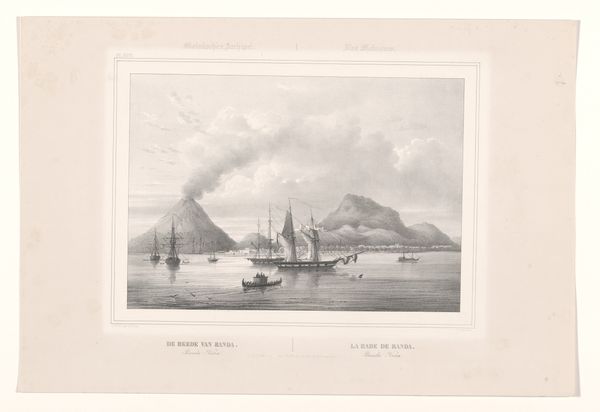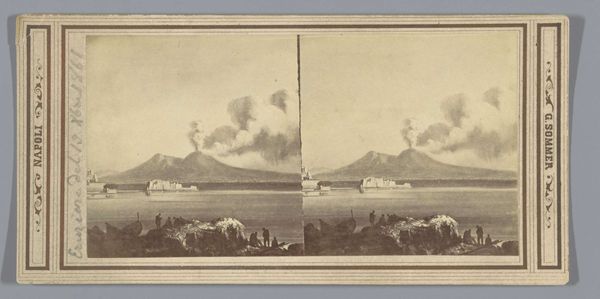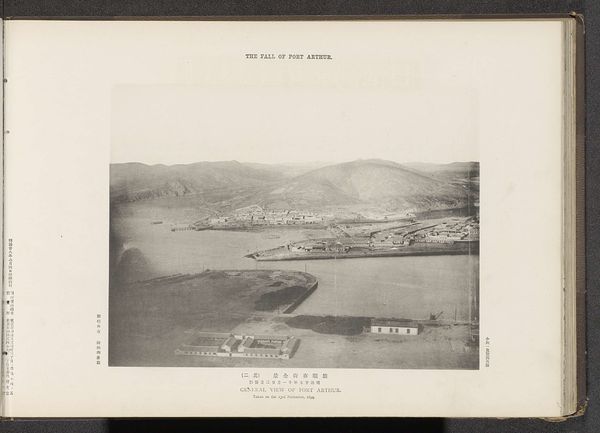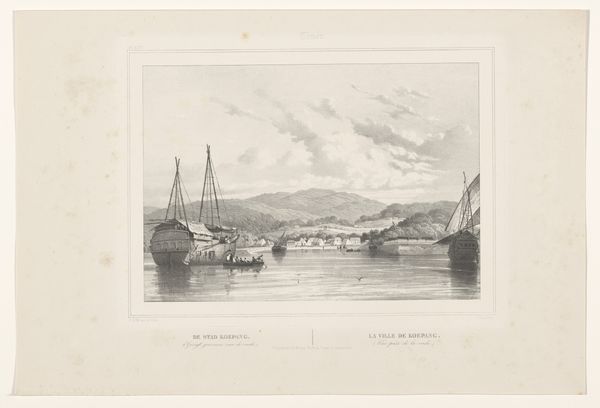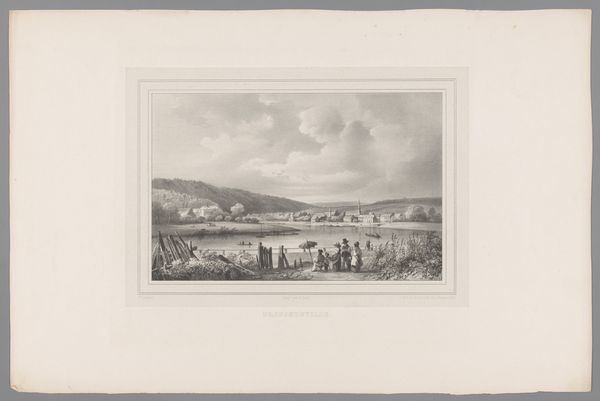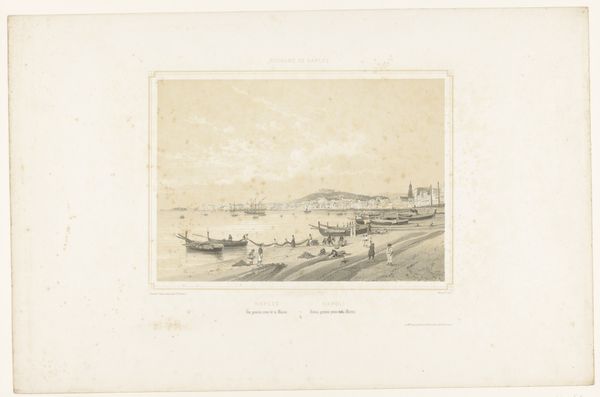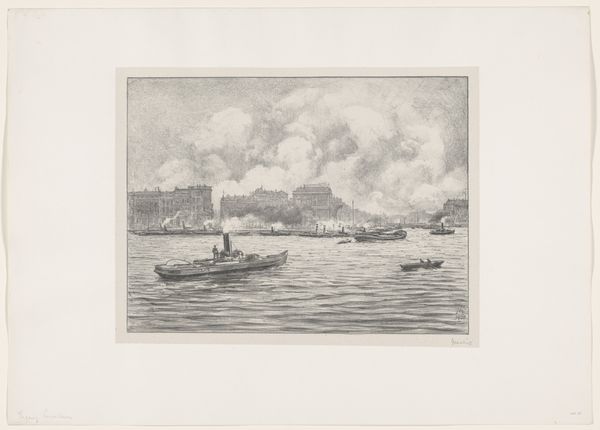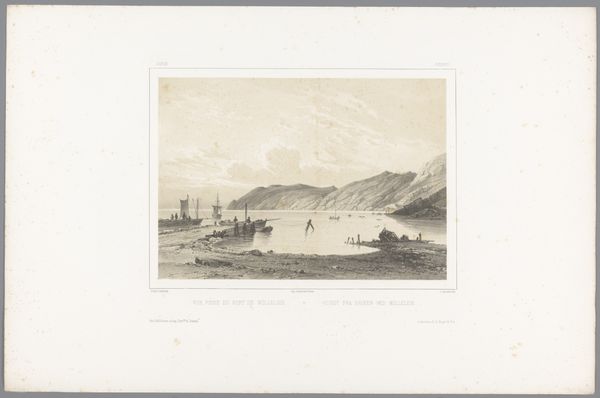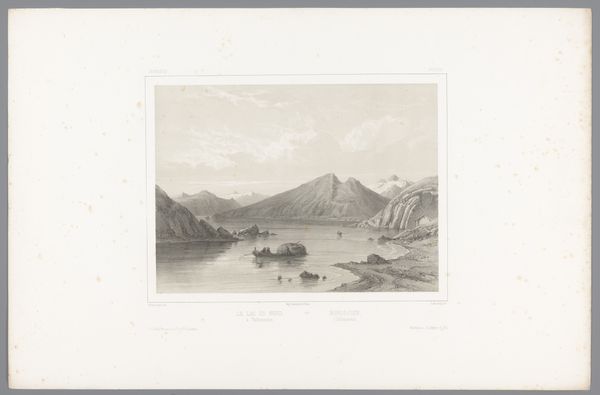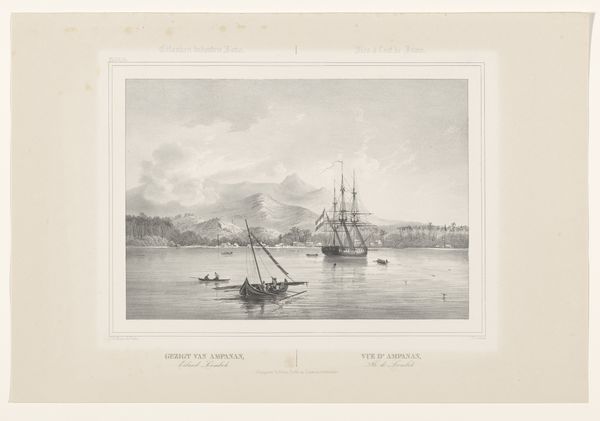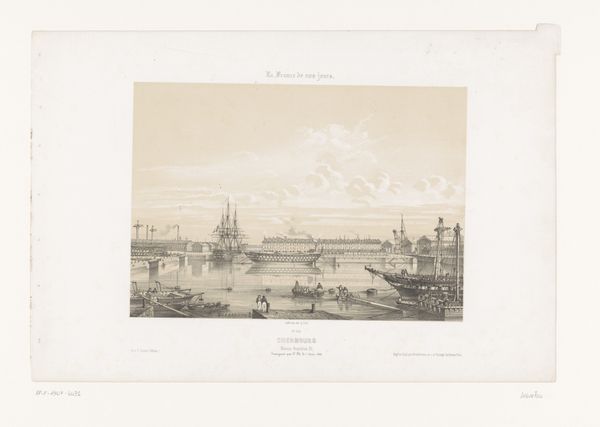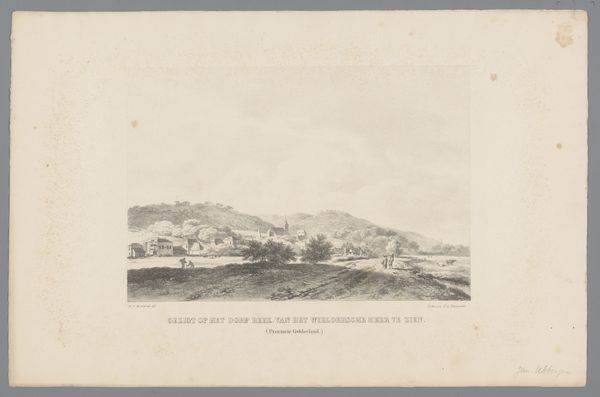
Gezicht op het eiland Ternate met de rokende vulkaan Gamalama c. 1847
0:00
0:00
# print
#
landscape
#
romanticism
#
cityscape
Dimensions: height 356 mm, width 536 mm
Copyright: Rijks Museum: Open Domain
Curator: What a captivating scene! This print, dating from around 1847, captures a view of Ternate Island with the smoking volcano Gamalama. Paulus Lauters, the artist, really transports us back to that moment. What's your initial take on it? Editor: Volcanoes have such a strong vibe! The way smoke just puffs out from the mountain looming above those tiny ships. It’s both menacing and beautiful. Sort of makes you feel insignificant, you know? Curator: Indeed! And situating this piece within its historical context reveals a lot. We have to consider Dutch colonialism and the spice trade—Ternate being part of the Moluccas, the famed "Spice Islands." Lauters’ print, made at a time of expanding Dutch influence, might be read as both a landscape and a claim to territory, an assertion of dominance. Editor: It is striking how tiny the indigenous boats appear relative to those big European ships. Are we sure this is romantic and not a propaganda painting for The Netherlands? Curator: That is a key question to ask. I see it occupying a space between Romanticism and visual records of imperialism, an intersection which calls attention to that dynamic in the artwork. We see a beautiful vista, sure, but beauty in service of empire? Editor: Exactly. You can almost smell the nutmeg and the gunpowder! Plus, all these landscapes end up on a wall somewhere, a little trophy of conquest, I guess. Even the puff of smoke from the volcano starts feeling like a declaration. Curator: It underscores the complex relationship between art and power. How artistic representations shaped perceptions and justified actions. This image would’ve circulated within particular networks and reinforced certain viewpoints. The question remains who this image serves and at whose expense. Editor: Heavy, man. Well, I came in thinking this was a picturesque scene with a cool volcano. Now it's got me thinking about trade routes, colonization, and hidden meanings! Who knew a quiet picture could be so loud, huh? Curator: Art is rarely neutral. Examining how these visuals functioned allows us to excavate their complicated past and their effect in shaping our perspectives today. Editor: True that. Thanks, this insight is mind-blowing. I'll never look at volcanoes the same way!
Comments
No comments
Be the first to comment and join the conversation on the ultimate creative platform.
